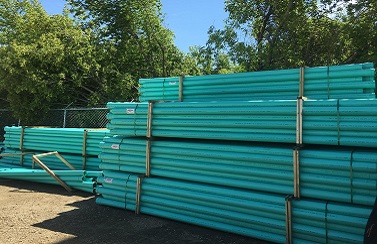An affordable way to change the layout with Drywall supplies Edmonton

Drywall is a building material from the category of finishing. This is a "sandwich" of two cardboard sheets with a gypsum "filling". Tightly compressed paper not only plays the role of a frame but also has excellent adhesion. This greatly simplifies further finishing with both paint and other materials. For example, tiles. The classification depends on the task that you want to solve with the help of drywall. Also, the features of the installation site explain by the experts at drywall supplies Edmonton.
Types of drywall and materials for its installation
1. KGL: This is the standard type installed in rooms with a normal humidity index.
2. GCLW. Moisture-resistant variety, designed for installation in bathrooms and other rooms, with good ventilation. According to the standard, paint the sheets of this type with light green and despite the increased moisture resistance, in rooms where it is always damp, for example, for finishing walls in the basement without prior insulation, it is not recommended to use it.
3. GKLO: A refractory species, not prone to fire, melting without the release of toxic substances at very high temperatures, created for the decoration of non-residential premises. Additives in the composition of sheets of red or graycolor do not pose a high level of danger to human health, however, they are not customary to use in bedrooms and living rooms, but for the design of the attic or the creation of pantries, they are indispensable.
4. GVL. Gypsum fiber sheets in which a denser cellulose mass is used instead of cardboard. A distinctive feature is a presence in the composition of excipients that increase the overall level of resistance to fire and water.
In addition to the composition, the sheets differ in size. Standard: 2.5x1.2 meters with a thickness of 12 mm for walls and 9.5 mm for ceilings, but in hardware stores, drywall and non-standard sizes are sold, and in addition, in the vast majority of cases, for the implementation of interior solutions, it will still be necessary to cut and bend. As for what materials are needed for the installation of drywall, then, in addition to finishing compounds, you will only need a rigid profile for assembling structures and a sickle for gluing seams.
Tools for assembling plasterboard structures
One of the relative disadvantages of installing drywall is the need to purchase an impressive number of tools.
So, the first category includes:
- Level and roulette for measurement;
- Perforator and screwdriver for screwing;
- Rule and angle for markup;
- Construction or stationery knife with a wide blade (20 mm) for cutting sheets;
- Metal scissors for cutting profiles;
If we talk about what kind of tool is needed for installing a drywall and nothing else, then to work with this material you will need:
1. Crowns on drywall: Simplify the cutting of holes, for example, to display the wiring hidden inside the structure.
2. Planer for GCL: Edge or peeling tool for processing leaf edges.
3. Needle roller. It is needed to create curvilinear surfaces.
4. Cutter: It is a specific tool that greatly facilitates the connection of profiles to each other. In particular in those places where it is impossible to use self-tapping screws or press washers.
Drywall tool
Drywall supplies Edmonton for working with GCL can be attributed as the most expensive. But also the most necessary item of expenditure, although the purchased tool will pay for itself because the same perforator can be used not only for drywall work. The perforator is in use for fastening guide profiles, installing suspensions.
A screwdriver is necessary for attaching the profile to the suspensions, sheets of drywall to the guide profiles.
The water level is necessary to find the level of the horizon, the construction plumb line - to find the vertical level.
A special tool for working with drywall includes a toothed roller designed to pierce drywall in the right places. It is in use in the manufacture of curvilinear structures from drywall. A tape measure, a hammer, metal scissors necessary for quickly cutting a profile, a knife with interchangeable blades to cut drywall, a padding cord for marking, and a set of cutters will also come in handy for cutting holes in the drywall. For putty drywall, you need a set of spatulas - with approximately such a set of tools for working with drywall, you can safely start making repairs in an apartment or office with your own hands.
The installation materials are profiles for the device of guides, self-tapping screws and dowels for fasteners, a special tape, and a mixture for hermetic sealing of seams. You also need putty and profiles for the device of starters and guides, suspensions, self-tapping screws and dowels for fastening the profile and drywall, a special tape and a mixture for sealing the seams, putty.
